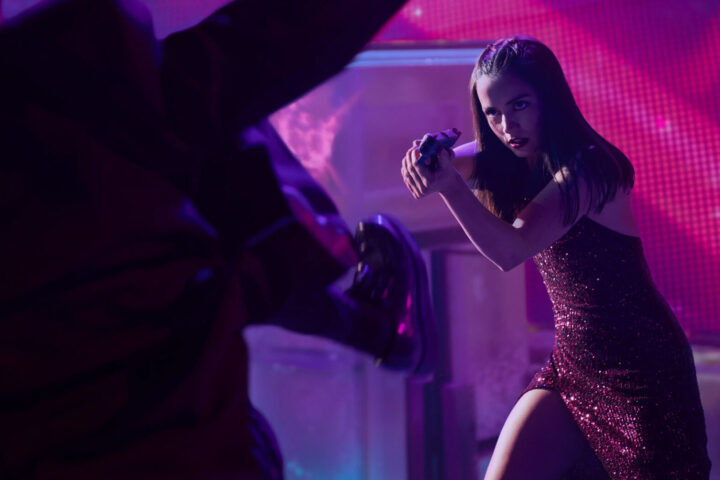Bleak, unrelenting and essential, The Painted Bird, a house of horrors disguised as a movie, is a picture of such blunt raw force that, the story goes, it drove viewers for the exits at film festivals late last year (though Václav Marhoul, the film’s writer-director, denied this to me in a recent chat). Nonetheless, while it comes with a notorious reputation for shock value, make no mistake – this unflinching Holocaust drama is a serious work of art.
Based on Jerzy Kosinski’s controversial 1965 book, purported on release a “memoir” from survivor’s stories but later revealed as fiction, it’s an unblinking vision of abject barbarism in its tale of a nameless, homeless adolescent boy shuttled across provincial, Nazi-occupied eastern Europe, subjected to unspeakable cruelties and abuse.
Young non-actor Petr Kotlar (handpicked off the street by Marhoul who was deep into the screenplay at the time) is the safety-seeking Jewish youth referred to in the film’s credits as “Boy,” and the picture doesn’t so much require him to build a character as to react to atrocities, of which he is given a full menu.
Set in an unidentified Slavic region, picture opens with a barbaric episode – a shock predicating the gruesome nature of what will come next – followed by the death of the boy’s aged aunt and protector (Nina Sunevic), setting off a chain of episodic events (separated by title cards).
First, he becomes a slave to superstitious gypsy Olga (Ala Sakalova), who in the film’s signature visual sequence buries him in the ground, to his neck, to be viciously pecked at by marauding crows. These indelible, haunting black and white images are simply amongst the year’s finest.
Next, jealous miller and husband Udo Kier shows up (never a good sign) to exact a visceral revenge on a suspected adulterer, an eye-ball plucking so gruesome you can imagine why some shrank from the screen and headed to the exit. This is child’s play compared to what comes next, where an oversexed village floosy (Jitka Čvančarová) is targeted for death by the locals.
But the picture is just getting started, and when Julian Sands shows up as a pedophile loner given possession of the boy by a well-meaning Catholic priest (a dubbed Harvey Keitel), the movie looks with an unblinking eye at graphic sexual abuse, and its role in the boy’s survival. Which evils are lesser, if any?
The boy, of course, becomes emotionally calcified and withdrawn, all survival instinct minus innocence, not unlike the survivalist Beirut street urchins of Nadine Labaki’s 2018 social realist masterwork Capernaum, lambs for the taking in a world of unrepentant wolves. These are children with no idea why they were born, why they are so unloved and what the point of living might be.
There are moments of respite in the sordidness, featuring Stellan Skarsgaard and Barry Pepper as benevolent, or at least agnostic, soldiers, one of whom provides the boy a much-needed gun at just the right moment.
The titular bird comes midway through the picture, painted white and ultimately rejected, and devoured, by the other birds – this is equal opportunity torture, neither man, child or beast to be spared. Unlike the bird, the boy figures out what it takes to survive, and his adaptability is part of the point. But survival at what cost?
As a piece of cinema, The Painted Bird is a first-class art film of pristine compositions, shot in scope by DP Vladimír Smutný as a three-hour Hades of arresting images, a veritable trip across rural European landscapes, into rivers, shacks, huts and town squares. The paradox here is that Marhoul has crafted a ravishingly beautiful vision gazing upon the ugliest of behaviors.
The movie has absolute courage – and in Kotlar’s extraordinary face, a haunted vulnerability and sensitivity impossible not to are for – and is never a freefall into exploitation. To those overcome while viewing, it should be noted that the movie is anything but sensational in its view of human values and principles eroding during the fall of civilization, a godless landscape that services as a guidebook to hell – everyone for himself and no consequences, either moral, social or legal, to be found. Instead, the picture merely presents a series of terribly unfortunate events, letting of decide.
Minus uplift and resisting sentiment, The Painted Bird ends on a subtle up note in a visual regarding a close-up, a window and a brief message suggesting hope, however small, even a mere daydream.
The to-date best film of 2020.
4 stars.



